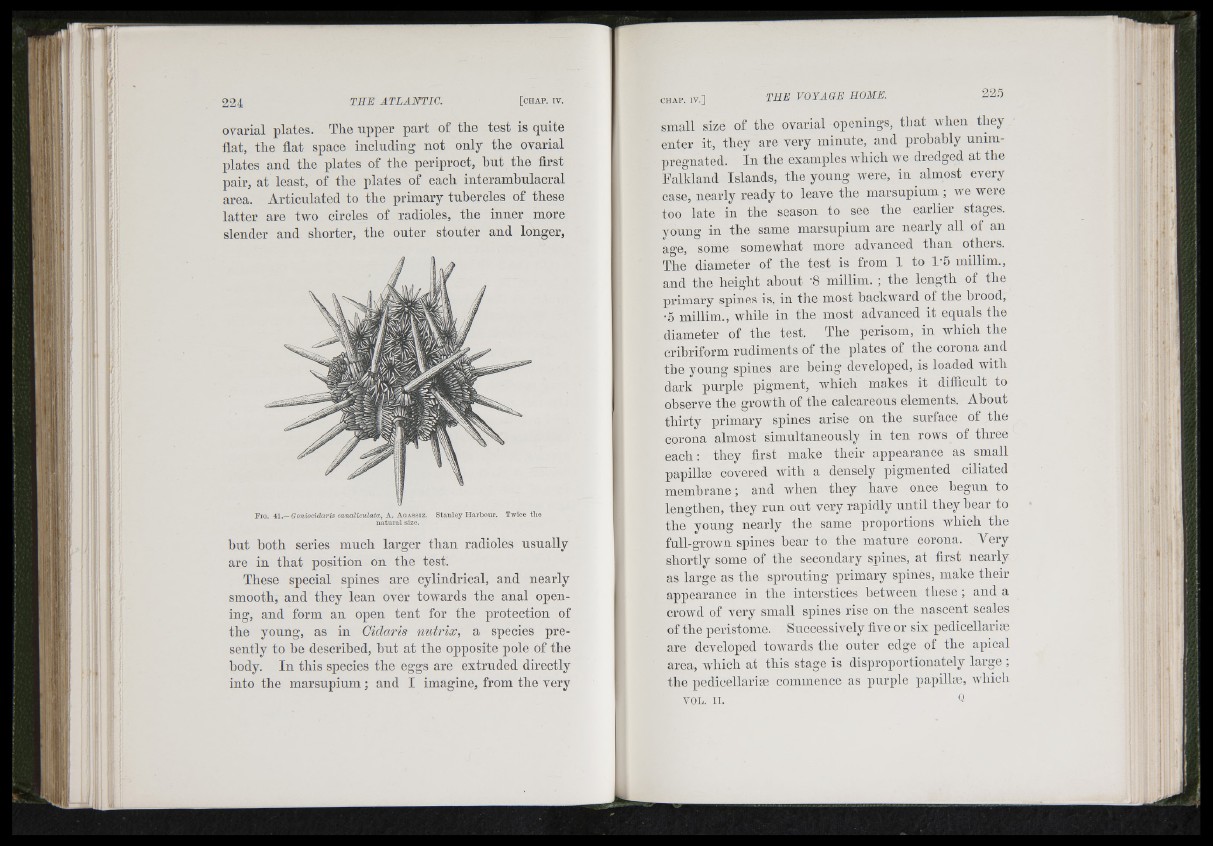
T! i'
ovarial plates. The upper part of the test is quite
flat, the flat space including not only the ovarial
plates and the plates of the periproct, hut the first
pair, at least, of the plates of each iuteramhulacral
area. Articulated to the primary tubercles of these
latter are two circles of radióles, the inner more
slender and shorter, the outer stouter and longer.
F i g , i l ,—Goniocidaris canaliculata,, a . A g a s s i z . Stanley Harbour. Twice the
n a tu ra l size.
but hoth series much larger than radióles usually
are in that position on the test.
These special spines are cylindrical, and nearly
smooth, and they lean over toAvards the anal opening,
and form an open tent for the protection of
the young, as in Cidaris nutrix, a species presently
to he described, hnt at the opposite pole of the
hody. In this species the eggs are extruded directly
into the marsupium ; aud I imagine, from the very
small size of the ovarial openings, th a t Avhen they
enter it, they are very minute, and probably unimpregnated.
In the examples Avhich Ave dredged at the
Falkland Islands, the young Avere, in almost every
case, nearly ready to leave the marsupium ; Ave were
too late in the season to see the earlier stages,
young in the same marsupium are nearly all of an
age, some somewhat more advanced th an others.
The diameter of the test is from 1 to lA millim.,
and the height ahout ‘8 millim. ; the length of the
primary spines is, in the most backward of the brood,
•5 millim., while in the most advanced it equals the
diameter of the test. The perisom, in which the
cribriform rudiments of the plates of the corona and
tbe yonng spines are being developed, is loaded Avith
dark purple pigment, wFicli makes it difficult to
observe the growth of the calcareous elements. About
th irty primary spines arise on the surface of the
corona almost simultaneously in ten rows of three
each: they first make their appearance as small
papillæ covered Avith a densely pigmented ciliated
membrane ; and Avhen they have once begun to
lengthen, they ru n out very rapidly u ntil they hear to
the young nearly the same proportions Avhicli the
full-grown spines hear to the mature corona. Very
shortly some of the secondary spines, at first nearly
as large as the sprouting primary spines, make their
appearance in the interstices between these ; and a
croAvd of very small spines rise on the nascent scales
of tbe peristome. Successively five or six pedicellariæ
are developed toAvards tbe outer edge of the apical
area, aa'I u c Ii at this stage is disproportionately large ;
the pedicellariæ commence as purple papillæ, Avhich
VOL. II. q
Hi i I